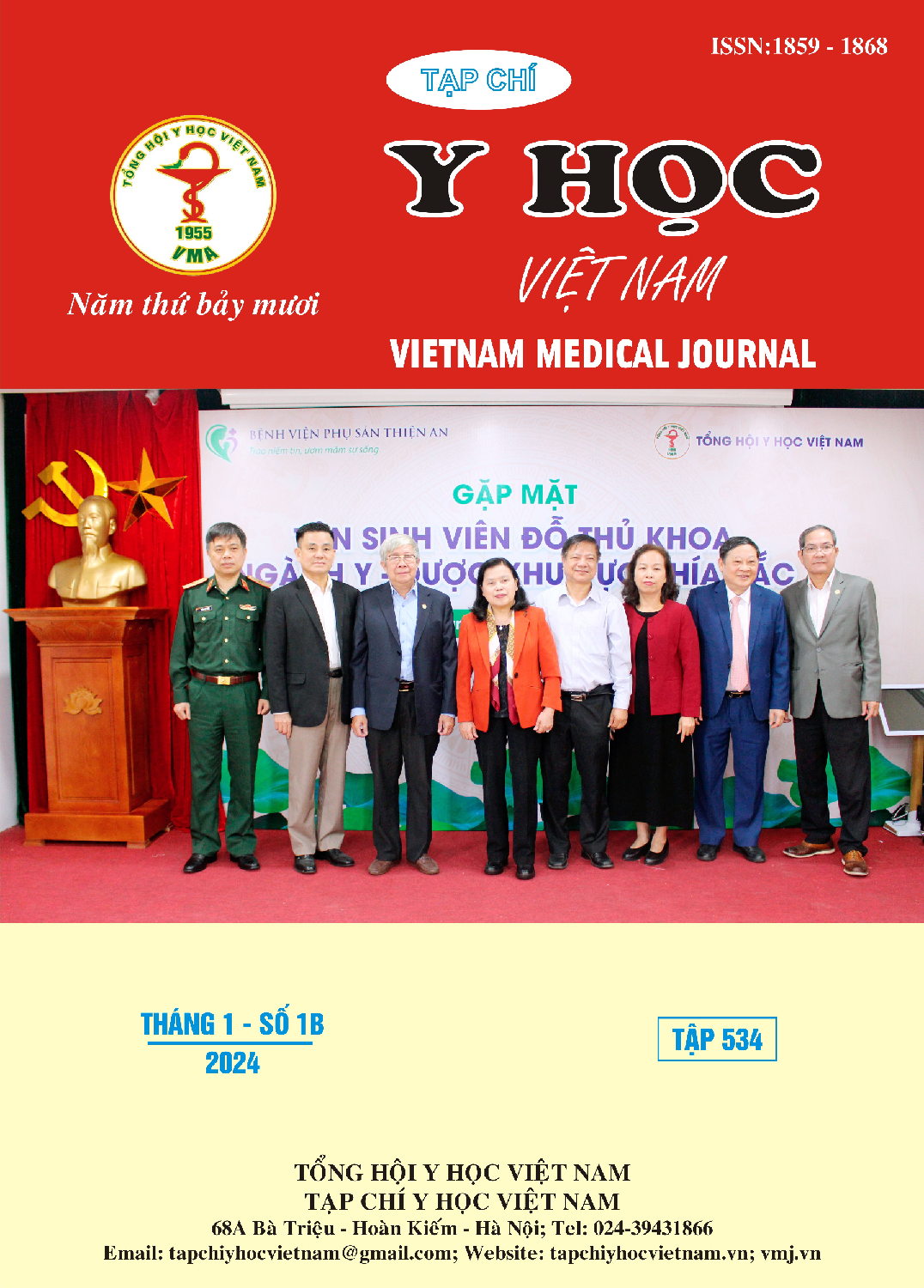MEDIUM-TERM PATENCY OF ARTERIOVENOUS FISTULA CREATION FOR HEMODIALYSIS IN PATIENTS WITH CHRONIC RENAL FAILURE
Main Article Content
Abstract
Background: In Vietnam, it is estimated that about 8 million people have chronic kidney failure, of which stages III to V account for 3.1 - 3.6% [3]. Today, hemodialysis is a popular method in the world, as well as in Vietnam. This is a method of filtering blood by creating a circulation outside the body to remove waste and excess water through the filter through the following mechanisms: ultrafiltration, diffusion, and convection. Most patients need dialysis 12-18 hours/week and usually three times/week. Arteriovenous bypass surgery for routine dialysis in patients with end-stage chronic kidney failure is essential. Methods: Retrospective description of case series. Results: The study had a mean age of 55.5 ± 15.1 years; Females make up the majority, and lipid metabolism disorders, hypertension, and diabetes account for 97.9%, 94%, and 79.2% of the sample, respectively. The surgical location of the wrist between the radial artery and cephalic vein accounted for the majority, 50.6% of the sample. We often ligate the returning venous branch after AVF surgery, accounting for 91.5% of the sample. The technical success rate reached 96.2%. The complications recorded as surgical wound infection accounted for 7.7%; hematoma accounted for 6.4%; and embolism 1.7%. The rate of primary patency accounted for 82.3% of the sample. Mid-term complications include steal syndrome, accounting for 10.6%; Hand edema accounted for 5.1% of the sample. Conclusion: The mid-term results in vascular primary patency of AVF in patients with chronic renal failure are safe, effective, and have few complications.
Article Details
References
2. Andrew S Levey, Josef Coresh (2012). Chronic kidney disease, Lancet, 379, 165-180.
3. Vivekanand Jha (2009), Current status of chronic kidney disease care in Southest Asia,Seminars in Nephrology, 29(5),487-496.
4. Gjorgjievski N, Dzekova-Vidimliski P, Gerasimovska V, Pavleska-Kuzmanovska S, Gjorgievska J, Dejanov P, Sikole A, Ivanovski N. Primary Failure of the Arteriovenous Fistula in Patients with Chronic Kidney Disease Stage 4/5. Open Access Maced J Med Sci. 2019 Jun 15;7(11):1782-1787.
5. Nguyen B, Duong MC, Diem Tran HN, Do KQ, Nguyen KTT. Arteriovenous fistula creation by nephrologist and its outcomes: a prospective cohort study from Vietnam. BMC Nephrol. 2023 Apr 4;24(1):88.
6. Schmidli J, Widmer MK, Basile C, de Donato G, Gallieni M, Gibbons CP, et al. Editor’s choice – vascular Access: 2018 clini- cal practice Guidelines of the European Society for Vascular Surgery (ESVS). Eur J Vasc Endovasc Surg. 2018;55(6):757– 818.
7. McLafferty RB, Pryor RW, Johnson CM, Ramsey DE, Hodgson KJ. Outcome of a comprehensive follow-up program to enhance maturation of autogenous arteriovenous hemodialysis access. J Vasc Surg. 2007; 45(5):981-5.
8. Pfister M, d'Avalos LV, Müller PC, de Rougemont O, Bonani M, Kobe A, Puippe G, Nickel F, Rössler F. Long-term patency of arteriovenous fistulas for hemodialysis: A decade's experience in a transplant unit. Hemodial Int. 2023 Oct;27(4):388-399.
9. Huber TS, Carter JW, Carter RL, Seeger JM. Patency of autogenous and polytetrafluoroethylene upper extremity arteriovenous hemodialysis accesses: a systematic review. J Vasc Surg. 2003 Nov;38(5):1005-11.
10. Hossain S, Sharma A, Dubois L, DeRose G, Duncan A, Power AH. Preoperative point-of-care ultrasound and its impact on arteriovenous fistula maturation outcomes. J Vasc Surg. 2018; 68(4):1157-1165.


